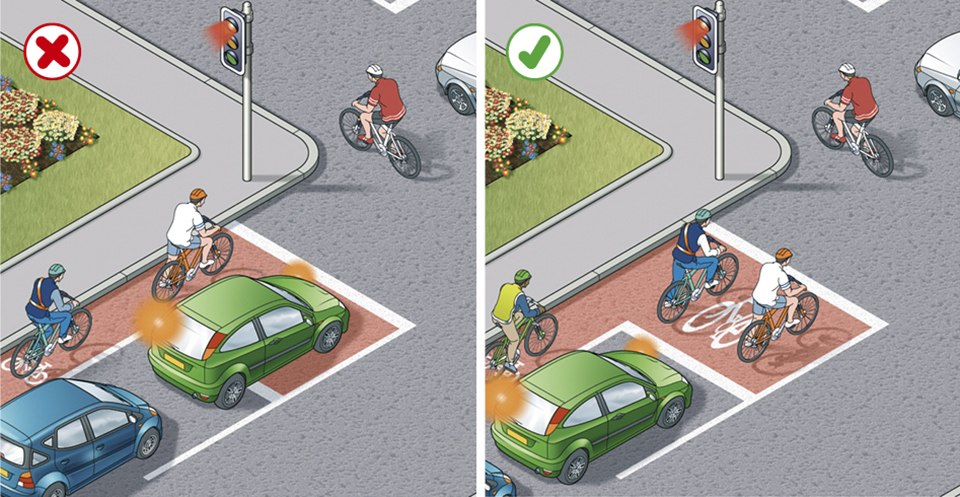I’ve had a few hits over the last few days on the search term “adi how to attract pupil” (sic) and “lack of work for adis” (or similar phrases). I also noticed a topic on a forum where a newly qualified ADI was asking how to get pupils – after 3 months of being an ADI they had none whatsoever!
The whole situation is really quite simple to summarise. As an ADI you are offering a service, and there are people out there who are prepared to pay for that service. None of those people knows you exist – and even if they do, there are hundreds or thousands of other ADIs also trying to sign them up.
People will not wander the streets trying to find you. You’ve got to find them. So the first thing you have to do is let everyone  know you’re there, and that means advertising. This can be anything from a handwritten scrap of paper stuck in the window of the local newsagents to full-blown colour ads in local or national papers and magazines. You can deliver flyers door-to-door, hang out near schools and universities (that could get you arrested, so be careful), or any number of other things. One driving school in my area even pays for huge billboard advertisements in at least three locations. Obviously, the cost of advertising ranges from a few pennies a week up to thousands of pounds.
know you’re there, and that means advertising. This can be anything from a handwritten scrap of paper stuck in the window of the local newsagents to full-blown colour ads in local or national papers and magazines. You can deliver flyers door-to-door, hang out near schools and universities (that could get you arrested, so be careful), or any number of other things. One driving school in my area even pays for huge billboard advertisements in at least three locations. Obviously, the cost of advertising ranges from a few pennies a week up to thousands of pounds.
Oh, and you don’t just have to do it once. You have to keep on reminding people you’re there somehow, so advertising can never really stop.
Now it gets controversial. If your advertising campaigns are successfully informing people of your existence, you’ve still got to give them something that stands out from everyone else’s offers. It’s like a fish nibbling at the bait on your hook – whether you catch it or not depends on the bait.
In an ideal world – one not populated by idiots – all instructors would be charging similar prices, so prospective pupils would really only be looking for the best instructors (or the ones that said they were the best, anyway). Unfortunately, the real world contains a lot of morons with no business sense (many of whom aren’t proven as good instructors yet, and many of whom are proven to be average instructors at best), and they’ve started a trend whereby the bait involves stupidly low lesson prices and sometimes even stupider offers. Many of these cheapo instructors will be charging as little as half of what they could be, and the problem is worse in the more deprived areas.
In theory, as you gain more experience as an ADI (and more passes to your name), your reputation will grow and – if you believe some people – eager pupils will be queuing outside your house permanently waiting for the next available vacancy on your 2-year waiting list. By this time you’ll only be working one or two hours a week anyway, in between your other work of saving whole countries from natural disasters and your tireless efforts on behalf of the pandas and other endangered species.
In reality, your reputation will get you some new pupils… sometimes. But it absolutely will not get you new pupils all the time. Periodically you’ll have a good spell, where one pupil maybe creates a chain reaction which brings in a dozen more friends and family. But more often than not pupils are effectively dead ends – all their friends are already taking lessons or have passed, or they’re older and don’t k now anyone who wants to learn. No matter what some people claim, that’s how it will be for the vast majority of ADIs, especially newer ones.
now anyone who wants to learn. No matter what some people claim, that’s how it will be for the vast majority of ADIs, especially newer ones.
Remember that if you’re a half-decent ADI, virtually every pupil you teach will think you’re “the best” – and those being taught by others will think exactly the same about their instructor. That is about as far as the reputation card goes.
There is an exception to this, and it is based on racial and cultural issues. For example, many Asian communities are very insular, and if you’re an Asian instructor specialising in Asian pupils then your referrals are likely to be more numerous. A female Muslim instructor specialising in teaching Muslim females is also potentially on to a winner. And the same seems to be true (to a lesser extent) for Polish and other minority groups where language is a barrier. Polish-speaking instructors can easily clean up in areas with high Polish populations.
None of these examples mean that you could automatically do the same if you were Asian or Polish. If other people are already doing it, it isn’t a new idea and it might end up being overworked – but if no one has caught on to the idea in your area… well. These examples just illustrate the importance of finding a relatively unique selling point (USP) or tapping a relatively untapped market. Cheapo lesson prices are no longer “relatively” anything, and they’re certainly not unique.
Back to the subject of advertising, you can spend a lot of money on it and not get a penny in return. As I said, all the other ADIs are also doing it so you’re just another drop in the ocean. This seems to prompt many desperate instructors to drop their prices even further, or to make ever more ridiculous offers, but the irony is that it isn’t that people aren’t interested in the previous offers – they just can’t seen them through the glare of all the others! Cheapo offers have had their day – they’re not unique enough to make you stand out anymore!
A few years ago I tried various forms of advertising as an experiment. For £600 I had a small advert in Yellow Pages for 18 months. In all that time I had ONE enquiry, and I strongly suspect even that was from YP staff after I’d told them I wasn’t going to re-advertise because it hadn’t worked. I also spent £120 on an ad in a free local newspaper over 3 months (guaranteed circulation of over 10,000 every month). I had no enquiries whatsoever from that. I’ve tried various other methods which have not shown an acceptable return on investment (ROI), either. Of course, I accept that advertising can work (some forms have for me), and that others might have more success than I did with the examples I mentioned, but it can’t possibly work for  everyone and especially not these days with so many ADIs all vying for work in the middle of a recession. Common sense tells you that.
everyone and especially not these days with so many ADIs all vying for work in the middle of a recession. Common sense tells you that.
Once you’re established – and if you don’t get a bad reputation along the way – the work is definitely there (it is for me). I’m effectively winning work away from all those newer instructors, and I often (and I mean very often) pick up pupils who have tried the cheaper option and found it wanting. That pushes things even further in my favour. Low prices might be the main thing that some learners look for, but an increasing number are quickly waking up to the realisation that they are being taken for a ride. That’s when I get hold of them.
Of course, if you’re happy not making a profit then you can specialise in teaching people who don’t have enough money to pay for proper lessons. There’s obviously a big market for such lessons, especially in these austere times, and if you can close your mind to the fact that if they pass they probably won’t be able to afford insurance and road tax either, but will possibly still drive, you may get a full diary out of it. But with lack of money also comes unreliability. I know from experience that if someone is struggling to afford lessons then they are highly likely to cancel lessons at short notice or not take them regularly. And of course, you’d need at least twice as many of these – so twice as much work on your part – to achieve the same income that an ADI charging normal prices would. You’ve got to be desperate or stupid to deliberately go down this route.
Before you start training to become an ADI – before you start trading, anyway – you need to do some serious calculating and work out just what it is you want to be. Do you want a new car or a banger? Will it be professionally sign-written or will it just have L plates on it and nothing else? Do you want to work full time or are you only going to cover nine to five weekdays (avoiding school runs and school holidays)? Are you aiming high or low? Is it going to be your main wage, of are you doing it for some pocket-money? Is it to show that you are independent or not stuck at home with the kids, so there will always be someone to support you with their huge main household wage?
And if you’re newly-qualified, the biggest question of all, and the one a huge number of people ignore or get wrong…
ARE YOU GOING SOLO OR WITH A FRANCHISE?
The vast majority of those thinking of becoming ADIs see one thing, and one thing only: an hourly income of £20-£25! They think “40 hours at £25 an hour? That’s £1,000 a week???” and they long for the day when they pass Part 3 and start packing that kind of money into their pockets. It’s also worth pointing out that many, if not most, people become ADIs because they need a job, and aren’t just doing this for a bit of fun. They consider the franchise option and conclude (often as a result of biased and misleading advice from “experts” on the web) that if they go solo all that money will be theirs. This is utter rubbish!
The reality is often exactly what the person I mentioned above has found. Three months in, and no work whatsoever. By going solo and dreaming of packing away £1,000 a week, they may as well plan to win the lottery or strike gold in their suburban gardens as business models instead. They’re all just as attainable.
It costs money just to be an ADI, even with no work. It is likely to be costing £100 or more a week just for the car. Fuel is extra (I spend £250 a week on fuel sometimes). The aforementioned advertising could easily set you back several hundred pounds in the short-term. And on top of that, you’ve got the cost of all your training and business set up to factor in. If you remain non-working for long you are quickly going to go out of business unless the main wage earner in the house is bankrolling you behind the scenes, and most people won’t have that luxury. The simple fact is that trying to get up-and-running on your own, with no financial backup, and a one-chance-only shot at avoiding bankruptcy is an absolutely stupid way forward for most new ADIs. Unfortunately, greed easily overwhelms common sense, and that £1,000 a week remains the Holy Grail.
Much of the “expert advice” to go solo right from the start comes from people who themselves started on a franchise and only went independent sometime later after they’d established themselves. They seem completely unable to link facts and real outcomes without adding their own prejudices into the equation and end up providing dangerously misleading “advice”. In other cases, these “experts” began their ADI careers in a galaxy far, far away… in a time and place far removed from the 2011/2012 recession. If nothing else, there are gazillions more ADIs around now than there were when they started, that’s for sure. Their “advice” is bound to be flawed if it doesn’t take into account the current situation, and unless you understand that situation you can’t advise on it!
The usual argument goes that a franchiser charging £100-£200 a week for a car and a supply of pupils is a crime akin to murder or arson! The people who spout this nonsense would happily advise you to go bankrupt… sorry, I mean go solo and not have any pupils to teach… rather than pay a franchise company a penny. Their hatred is usually aimed at Red, the AA, or BSM, but this is rarely stated directly and anyone looking in is left with the “advice” that all franchises are bad and should be avoided.
But the logic is simple. Do you want to be solo, with the very real risk of no work, no prospect of work (or impossibly slow growth), and mounting bills for failed advertising and car leases? Or do you want some help to get started?
You’ll already paying at least £100 for the car if you go solo, so an extra £50-£100 for a deal with a car and pupils is not that much more. Even if the franchise only gets you a handful of pupils, that’s a hell of a lot better than no work at all. It is enough to pay some bills, and it sets you on the road to growing your business and reputation. You need your head examining if you think that staying solo and totally redundant is the better option, just because someone who doesn’t like franchises told you it was. And this is even more true if you’re one of the growing number of people who simply don’t have a clue about any business matters, let alone those pertaining to being an ADI.
If you are struggling for work, consider a franchise.
Choose one which doesn’t have a minimum term contract, notice period, or stupid clause about not working within a 50 mile radius if you leave them.
 I was on a lesson with a pupil today who has her test coming up in a month or so. She’s a good driver, but the way her head works is her biggest obstacle. Roundabouts bring the problem right to the fore, but it isn’t just those – it can happen at junctions, crossings, anywhere.
I was on a lesson with a pupil today who has her test coming up in a month or so. She’s a good driver, but the way her head works is her biggest obstacle. Roundabouts bring the problem right to the fore, but it isn’t just those – it can happen at junctions, crossings, anywhere. know you’re there, and that means advertising. This can be anything from a handwritten scrap of paper stuck in the window of the local newsagents to full-blown colour ads in local or national papers and magazines. You can deliver flyers door-to-door, hang out near schools and universities (that could get you arrested, so be careful), or any number of other things. One driving school in my area even pays for huge billboard advertisements in at least three locations. Obviously, the cost of advertising ranges from a few pennies a week up to thousands of pounds.
know you’re there, and that means advertising. This can be anything from a handwritten scrap of paper stuck in the window of the local newsagents to full-blown colour ads in local or national papers and magazines. You can deliver flyers door-to-door, hang out near schools and universities (that could get you arrested, so be careful), or any number of other things. One driving school in my area even pays for huge billboard advertisements in at least three locations. Obviously, the cost of advertising ranges from a few pennies a week up to thousands of pounds. now anyone who wants to learn. No matter what some people claim, that’s how it will be for the vast majority of ADIs, especially newer ones.
now anyone who wants to learn. No matter what some people claim, that’s how it will be for the vast majority of ADIs, especially newer ones. everyone and especially not these days with so many ADIs all vying for work in the middle of a recession. Common sense tells you that.
everyone and especially not these days with so many ADIs all vying for work in the middle of a recession. Common sense tells you that.